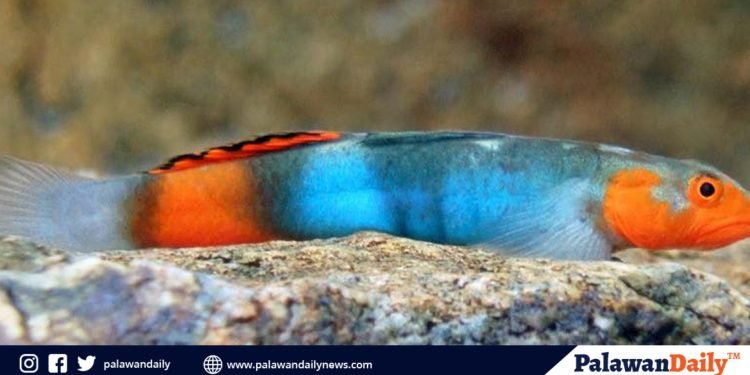In rushing streams that run through Narra, the province’s Rice Granary in the south, scientists have identified a new species of goby fish whose striking red coloration sets it apart from any known species.
The discovery, part of a press release issued by the Okinawa Institute of Science and Technology Graduate University (OIST), was announced in the journal Systematics and Biodiversity.
It details the identification of three new species of goby fish: Lentipes palawanirufus, found in Palawan, and Lentipes kijimuna and Lentipes bunagaya, both from Okinawa, Japan.
For Dr. Ken Maeda, first author of the study and staff scientist at OIST, the breakthrough was nearly two decades in the making. He first spotted an unfamiliar goby in Okinawa back in 2005.
“I was surprised by its fiery red head and lower body,” Dr. Maeda recalled. The fish resembled Lentipes armatus, then the only known Lentipes species in Japan, “but the color pattern was completely different.”
That chance encounter led to years of specimen collection in Okinawa and Palawan, in collaboration with Western Philippines University. Between 2015 and 2018, surveys in Narra streams yielded male gobies with bright red heads and reddish-brown bodies, later confirmed as L. palawanirufus.
The team used DNA sequencing to resolve whether the fish were simply color morphs or distinct species. Mitochondrial DNA showed no difference, but nuclear DNA revealed subtle genetic changes separating the gobies into four distinct lineages.
“We think that these fish must have diverged recently, so the mitochondrial genes haven’t had enough time to mutate,” said Hirozumi Kobayashi, a Ph.D. student at the University of the Ryukyus who analyzed the nuclear DNA with his supervisor, Professor Kazunori Yamahira.
Dr. Maeda confirmed that the newly described gobies differ in both body form and coloration from all 19 known Lentipes species worldwide.
The Okinawan species were named after Kijimuna and Bunagaya, folkloric wood spirits said to have red hair or skin.
“Like their namesakes, these two new species have red markings on their body,” Dr. Maeda said.
The researchers believe that male coloration plays a critical role in reproductive isolation. During courtship, males become more vividly colored and display behaviors that highlight their specific patterns, possibly leading females to reject males of other species.
Yet the team remains puzzled by how the gobies maintain their diversity despite their unusual life cycle. Lentipes larvae are swept downstream into the ocean and dispersed by currents, a process that normally encourages mixing between populations.
“Lentipes kijimuna and L. bunagaya are rarely seen in Okinawa,” Dr. Maeda explained.
“So we think that these species we encountered here were born somewhere else in Southeast Asia and transported to Okinawa when they were larvae.”
Fieldwork in Narra revealed the new species in upland freshwater streams, environments that remain largely undocumented in Palawan’s biodiversity surveys.
“This paper helps to reveal the mystery of these Lentipes gobies,” Dr. Maeda said. “But there’s still so much to find out.”























